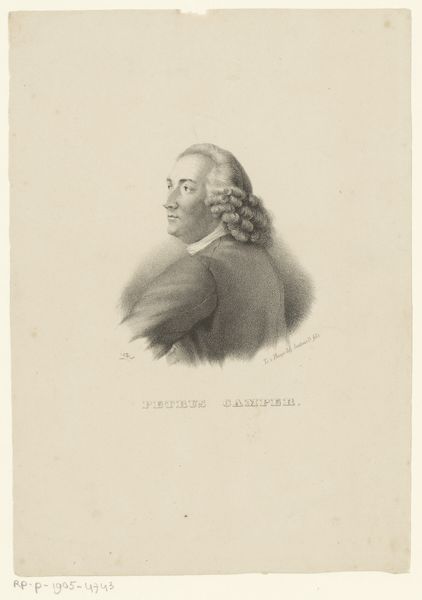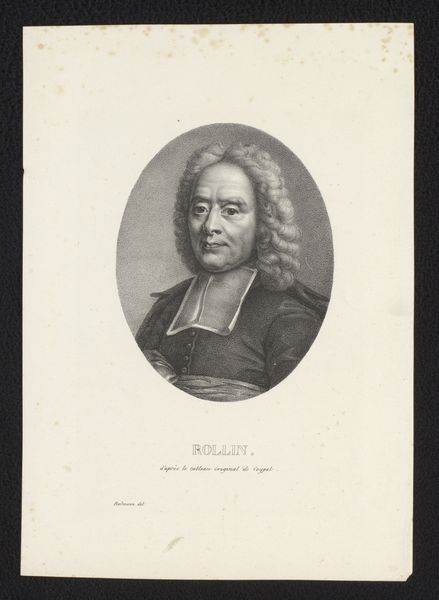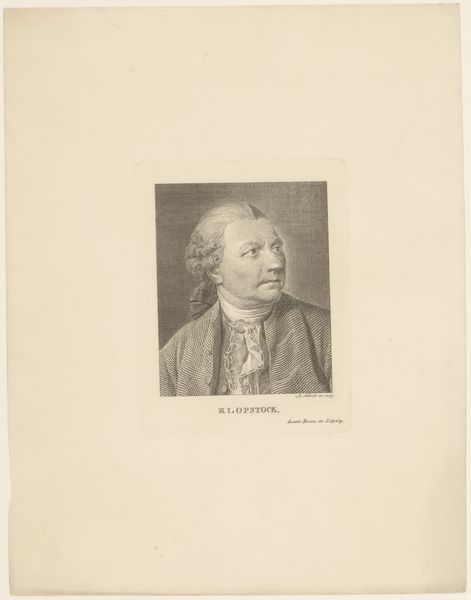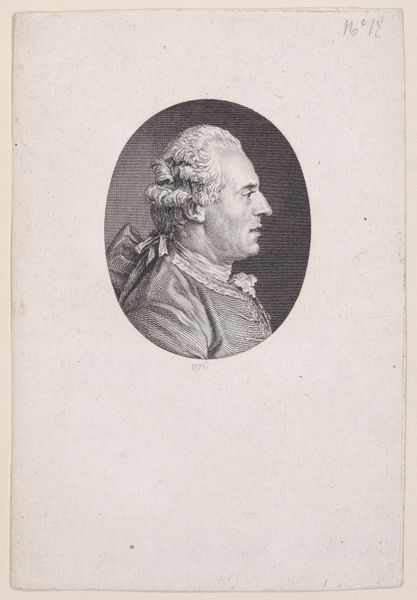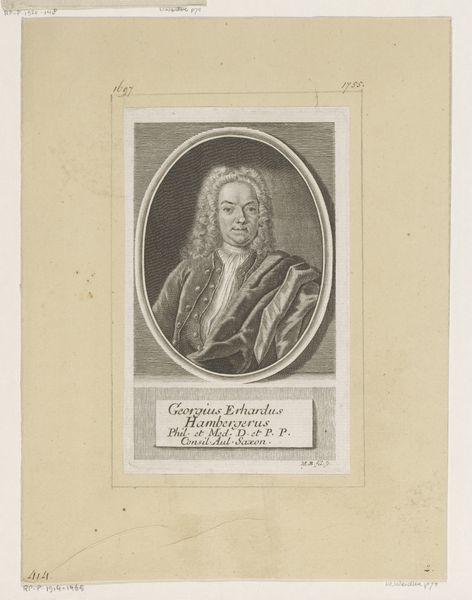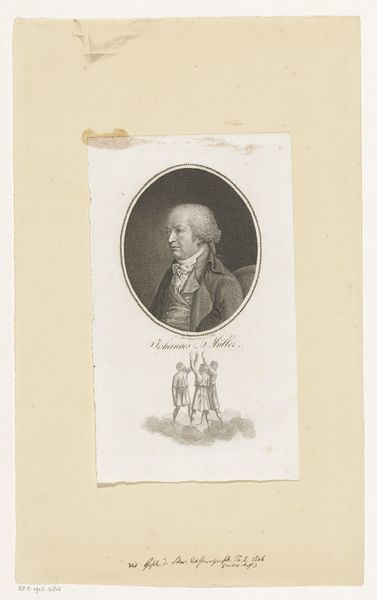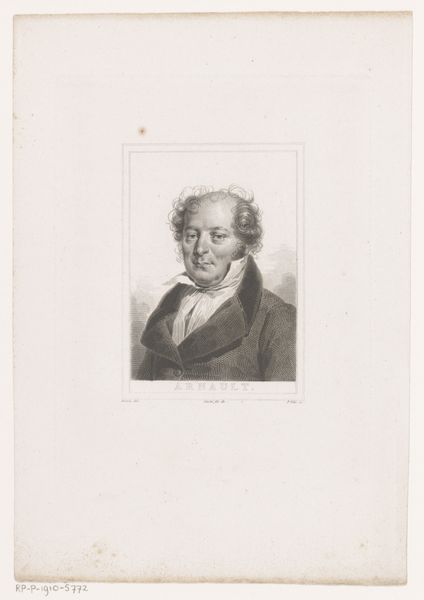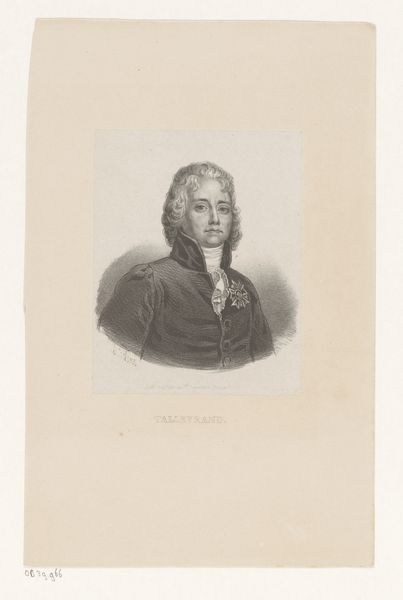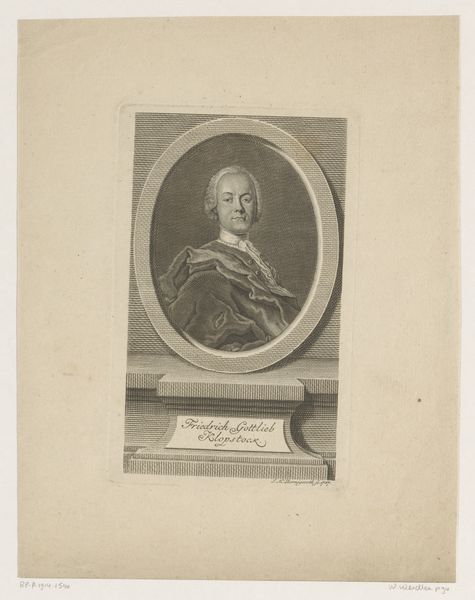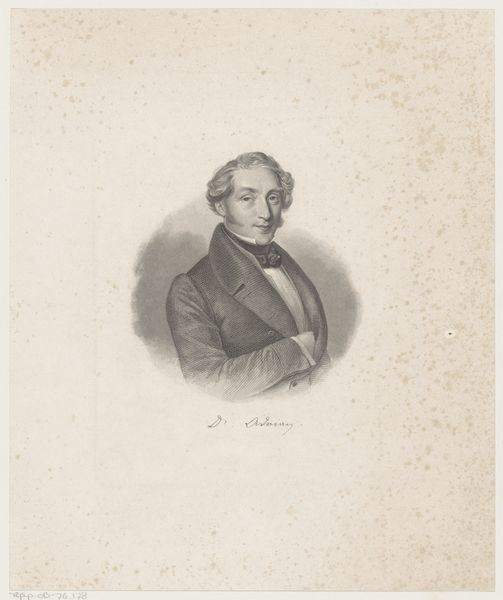
print, engraving
#
portrait
#
neoclacissism
# print
#
pencil drawing
#
history-painting
#
engraving
Dimensions: height 359 mm, width 276 mm
Copyright: Rijks Museum: Open Domain
Editor: So, this is Pierre Roch Vigneron's "Portret van François Quesnay," made sometime between 1830 and 1853. It's an engraving, a print of a portrait… I’m struck by the pose – so contemplative. What do you see in this piece, especially thinking about the time it was made? Curator: Well, this image of Quesnay, the famous economist, appearing so long after his actual lifetime, highlights the enduring power of intellectual figures. Vigneron creates this print at a time when Neoclassicism is already looking back at a classical, rational past. Consider the function of reproducing Quesnay's image as a print: Who was the intended audience, and how does the availability of such an image shape Quesnay’s legacy? Editor: That's interesting, I hadn’t considered the impact of its reproduction. It seems like the intention was to memorialize him in a specific way. So, making his image widely accessible solidifies his reputation in intellectual circles? Curator: Exactly. The politics of imagery are at play here. By creating and circulating this print, Vigneron is participating in the construction of Quesnay as an almost mythic figure of enlightenment. To whom does this sort of imagery appeal, and how is it distributed? Does that make sense? Editor: It does! It reframes the artwork itself as a sort of historical document that isn't just about the past but about how the past is remembered and consumed in the present. I suppose I thought of it as just a portrait, and now I realize its so much more. Curator: Precisely. Art doesn't exist in a vacuum, and understanding the cultural forces surrounding its creation and reception can offer really significant insight. Editor: This really opened my eyes to considering a piece’s role in a broader historical conversation. Thank you. Curator: My pleasure. Keep questioning the role and intention!
Comments
No comments
Be the first to comment and join the conversation on the ultimate creative platform.
